- Monday, 25 March 2024

- email [email protected]


Bayan o Sarili: Heneral Luna Film Review
Sa pagbukas ng pelikulang Heneral Luna ni Jerrold Tarog, muling balikan at buksan ang kwento ng kagitingan ng isang heneral at ng iba pang kontrobersyal na bahagi ng kasaysayan.
Hindi lubos na mauunawaan ang kasalukuyan kung hindi babalikan ang kasaysayan. Kaya sa pagbukas ng pelikulang Heneral Luna ni Jerrold Tarog noong Setyembre 9, 2015, nabuksan sa madla ang kwento ng kagitingan ng isang heneral at ng iba pang kontrobersyal na bahagi ng kasaysayan. Naging usap-usapan ng mga netizens ang pelikula at mistulang naging viral pa ang posibleng maagang pagkakatanggal nito sa mga sinehan. Muli nating hawiin ang kurtina at tanawin ang kasaysayan sa likod ni Heneral Luna.
Mapangahas at puno ng tapang ang grupo ni Direk Jerrold Tarog sa pagnanais na ibunyag ang madilim na bahagi ng kasaysayan. Ang kasaysayang kinagisnan nating mga bayani ay may kinalaman din sa kontroberysyal na krimen ng pagpatay sa kapwa Pilipino. Umiikot ang istorya sa panahon ng pananakop ng mga Amerikano at kung paano lumaban ang mga Pilipino upang hindi tuluyang masakop ng mga dayuhan at makamit ang soberanya.
Pilipino Laban sa Pilipino
“Mayroon tayong mas malaking kaaway kaysa mga Amerikano, ang ating sarili,” isa sa mga matalinhagang linyang binitawan sa pelikula na sumasalamin sa madilim na lihim ng kasaysayan. Hindi man direktang ipinakita ay tila palaisipan ang matagal nang isyu na si Presidente Emilio Aguinaldo rin ang nagpapatay kay Heneral Luna gaya nang nangyari kay Andres Bonifacio. Naging tahasan din ang pagsasalaysay ng totoong kaganapan sa pagitan ng mga Pilipino noong panahon ng mga Amerikano. Kahit sa pagitan ng mga miyembro ng militar o pulitika ay hindi nagkaroon ng kasunduan ang mga Pilipino sa pagdedesisyon.
Napapanahon Kahit Kahapon
Maikukumpara na magpahanggang ngayon ay nangyayari pa rin ang pagsisiraan sa pagitan ng mga Pilipino lalo na sa ating gobyerno. Kung sa pelikula ay makikitang pinatay si Heneral Luna ng kapwa Pilipino, ngayon ay wala pa ring nababago gaya nang patuloy nating nakikita sa mga balita at maging sa pulitika. Ang mga salitang ginamit ay nababagay rin sa modernong panahon lalo na ang mga punchline upang lagyan ng bahagyang komedya ang timpla. Bagaman makabago ang salita ay hindi nasakripisyo ang kwento at takbo ng istorya dahil sa katunayan, maging ang paggamit ng f imbes na p sa salitang familia ay kapansin-pansin din. Maging ang mga linya ay sadyang may laman na mas pinatindi pa ng batuhan ng mga dekalibreng artista gaya ni John Arcilla .
Atensyon para sa Suhestiyon
Talagang isa ang pelikulang ito sa mga maituturing na masterpiece sa larangan ng Philippine Movie, hindi lang dahil sa magandang storyline kundi maging ang cinematography . Makakakonekta ang lahat ng uri ng manonood sa ganitong klaseng pelikula dahil sa pagkakatalakay nito sa ating mga paaralan simula nang tayo ay nasa elementarya. Sadyang iba ang nakikita sa nababasa mula sa nilalaman ng libro kaya mas mainam kung sa susunod ay ipapalabas ito nang may subtitle upang masundan din ng mga manonood ang mga linyang tumatatak sa puso. Bagaman mayroon nang mga naunang pelikula patungkol sa ating mga bayani, maganda rin kung ang mga susunod na pelikulang tungkol sa kasaysayan ay gawing sequel style o tahiin ang mga istorya ayon sa pagkakasunod-sunod sa kasaysayan upang hindi nakalilito at mas madaling magamit bilang material sa pagtuturo sa mga paaralan. Noon pa man ay may kakaiba nang alab ang puso nating mga Pilipino gaya nang ipinakita ng isa sa ating mga bayani. Nakakalungkot lamang na isiping tila nakakalimot tayo at pati sa simpleng pagsuporta ng sariling atin ay mistulang mabibigo pa tayo. Sa bawat pagkakataon na iniisip natin ang ating kapakanan, isaalang-alang din natin ang ating bayan. Wala mang kapa o anumang costume gaya ng mga superheroes ang ating mga bayani ay umukit sa kasaysayan ang dugong kanilang ibinuwis. Sana’y huwag tayong magbulag-bulagan sa nagaganap sa ating bansa at gaya ng sinabi sa pelikula, “hindi panlalait ang pagsasabi ng totoo.” Kaya sa mga pulitiko, pulis, estudyante at maging pedicab driver , “negosyo o kalayaan, bayan o sarili, mamili ka.”

- The Organization
Publications
- The Benildean
- Shades of Gray
- Dekunstrukt
- Health & Fitness
- Buhay / Kolehiyo
- Paglalakbay
- College / Life
- Entertainment

- List of Tagalog Reviews
- Filipino Films
- About Tagalog Reviews
Search a Movie
Wednesday, january 27, 2016, heneral luna (2015).
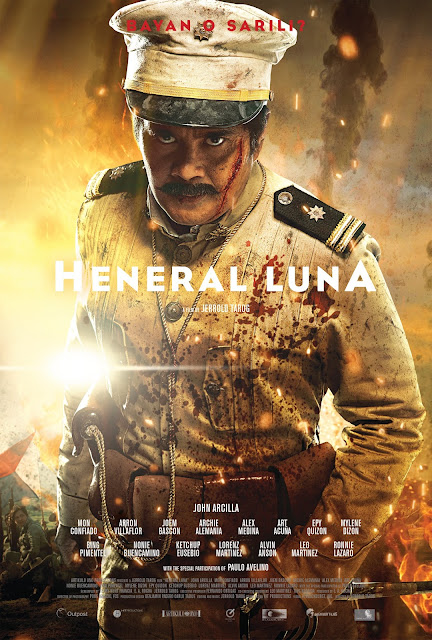
No comments:
Post a comment.
aspectos de hitokiriHOSHI
Feature. pinoys. life. lessons..
- Negosyo 101
- Digital Wellness
- Social Awareness
Movie Review: Heneral Luna (Story of Antonio Luna)
Heneral Antonio Luna at John Arcilla , parang hindi popular combo pero mabuhay sa mga gumawa ng pelikulang ito especially Jerrold Tarog at ang Artikulo Uno Productions . I am glad that they risk to produce one of the beautiful, creative, lively narrative, and superb hero Filipino films. Oo nagandahan ako ng sobra at ito lang ulit ang pelikula na ang mga manonood ay nagpalakpakan ulit. At dagdag ko rin marami kaming nanood sa Trinoma kagabi kahit weekday at dinner time.
Note: for future (video) movie reviews , please SUBSCRIBE to my YOUTUBE Channel. Salamat and Mabuhay
Heneral Luna: Not Your ordinary epic hero Filipino Film
Of course I know Gen. Antonio Luna , the brother of famous Filipino painter Juan Luna. He’s from a prominent family and fortunate enough to study abroad. He’s like bida-kontrabida historical figure because of his radical and liberal views in life. Pero aamin ko mas napansin ko si Gen. Luna noong napanood ko ang presentation ng Crime Klasik , hosted by Martin Andanar sa Youtube. Tingnan mo nga naman ginawan pala ng pelikula.
I have so many reasons why this Filipino film is worthy of our time at karapat-dapat sa P230 ng iyong pera que fan ka o hindi ni Hen. Luna (gaya ng kuya ko dahil sa napanood namin sa Youtube na kung saan may naiwan daw siyang yaman sa isang prominenteng political family ngayon). Ilan sa mga iyon ay…
- Edgy dialogues, shots – Kung akala mo boring ang movie, ay naku dialogue pa lang mabubuhayan ka na. May makatang part, may meaningful, at may iba na aakma sa panahong ito. Makaka-relate ka dahil sa mahusay na timing at delivery ng mga bida lalo na iyong kay Arcilla at Archie Alemania (Capt. Eduardo Rusca). Medyo seryoso yung character ni Joem Bascon (Col. Paco Roman) pero panaka-naka ay humihirit din naman.
Samantala isa sa gustong-gusto kong serye ng shots dito ay nung nag-time travel sina Luna at ang kanyang ina – Doña Laureana Luna na ginampanan ni Bing Pimentel . Ganda lang tuloy-tuloy na eksena, effects, konting arte at mga galaw ng mga artistang ( kasama sina Marc Abaya) bumubuo sa serye na iyon. Medyo ang dating sa akin ay combo ng crime klasik, play at music video ng isang kape kung saan featuring si Bamboo .
Naalala ko rin yung casual na approach sa mga dati-rati binibigyan pa ng mabigat na atake. Gaya na lamang ng paraan ng pamamahiya, pagpalo at pagpo-promote sa ranggo ni Antonio. Tiyak na matutuwa ang mga kabataan ngayon .
In fairness din sa mga foreigners sa film patawa at nangangabog din sa acting. Hehehe. Mabuti naman ano, kasi madalas pang-display acting lang yung iba.
- Solid characterization and interpretation – Ang gusto ko sa paglalagay ng character ay yung mahusay na naipapakilala ito sa pamamagitan ng acting ng aktor at kanilang dialogues. Dito ko naman trip na trip sina Nonie Buencamino ( Felipe Buencamino ), Lorenz Martinez ( Gen. Tomas Mascardo ), Leo Martinez ( Pedro Paterno ), at Mon Confiado ( Pres. Emilio Aguinaldo ). Actually, marami-rami na rin ang movies na napanood ko na kasama si Mon pero ito yung feeling ko na hindi lang inangat ang kanyang antas sa pagbibida kundi maging ang kanyang acting.
Medyo gray character s’ya as Aguinaldo pero maigi yung silent type approach n’ya. Parang itong subtle way na ma-emphasize din ang iba pang character sa films gaya nina Mascardo, Buencamino at iba pa. Kagaya rin ito sa atake ni Epi Quizon na gumaganap na Apolinario Mabini . Medyo bumaba lang konti ang paghanga ko sa tinaguriang ‘Dakilang Lumpo’ dahil parang pinalalabas na hindi siya kagaya ng iniisip ko. Sa bagay, hindi naman siya tinaguriang Santang Lumpo di ba at saka hindi naman siya masyado siniraan. Okay din dito si Mylene Dizon as Isabel, naalala ko yung film niya na “ Gatas… Sa dibdib ng kaaway. “
Kahit naman hindi mahaba ang exposure ay mahusay din naman sina Alex Medina (Capt. Jose Bernal), Ronnie Lazaro (Lt. Garcia), at Art Acuña (Col. Manuel Bernal). Samantala, medyo hindi ko trip yung tsika kay Joven played by Aaron Villaflor . Hindi dahil sa wala s’yang saysay sa film o pangit ang kanyang acting, parang napanood ko na kasi ‘yang ganyan sa ibang film gaya ng Gabriela .
Isa na lang sasabihin ko kay John Arcilla- BRILLIANT!
Mapangahas na R13 historical film
Hindi ko na maalala kung ano rating sa ibang kagayang film na ito pero ito ay R13 dahil sa malulutong na mura, digmaan sa field at kama, at iba pang maselang content nito ay dapat ngang pang 3 rd year high school ( ay K12 na pala) pataas na dapat ang nanood.
Alam mo sa panahon ngayon na iilan na lang ang genre na mapagpipiliin at patay na ang action films, mabuti may naglalakas loob pa at with diin kong sasabihin naghahatid ng makabuluhan at nakaka-entertain na pelikula. Sana may mga sumunod pa!
Mabuhay sa staff and crew ng film na ito especially din sa mga writers na sina E.A. Rocha, Henry Hunt Francia, at Jerrold Tarog.
UPDATE! Trivia
Leave a comment Cancel reply
Your email address will not be published. Required fields are marked *
Notify me of followup comments via e-mail. You can also subscribe without commenting.
This site uses Akismet to reduce spam. Learn how your comment data is processed .
6 thoughts on “ Movie Review: Heneral Luna (Story of Antonio Luna) ”
sino-sino ang mga tauhan sa heneral luna
nasa content po ang sagot :p
Pingback: Who is Jericho Rosales on screen, in person?
Pingback: Am I Ambitious or gritty? Hello 2016! | kwento't paniniwala ni hitokiriHOSHI
i love this heneral luna
Mabuhay Angel! Thank you for the visit!
- Skip to main content
- Skip to secondary menu
- Skip to primary sidebar
- Skip to footer
Cultivating the Filipino soul through culture and history
Demystifying the Heneral Luna Phenomenon – A Movie Review
September 23, 2015 by Ninah Villa
I woke up to a most singular occurrence, Tuesday last week. Heneral Luna, an indie historical film which had opened quietly the week before, had begun trending in Twitter at 4 a.m. Like the brash and vitriolic general of the same name, it had refused to fade calmly into obscurity and continued to pop in and out of the trending list in succeeding days.
People have suddenly and inexplicably fallen in love, so much so, that when cinemas dropped from 100 to 48 after the first week of screening, public clamor managed to push the cinema count up to 104.
What is it about Heneral Luna that has so captured the hearts of so many?
Birth of a Renegade
Its popularity is even more surprising considering it doesn’t feature the excesses of Hollywood, the inanity of slapstick comedy, or the endless gush of maudlin mistress woes. What it does show is a Filipino historical and cultural experience told boldly but conscientiously, that is, with more than the usual degree of attention paid to the essentials and the essential peripherals. From the sweeping vistas of verdant land, down to the smallest detail on uniform buttons, everything is laid out with almost reverent care.
And it isn’t an elitist snob. Those harping about narrative flow, nuance, gravity and focus must understand that a perfect film is pointless if it does not reach an audience. Heneral Luna, already at a disadvantage because of its traditionally unpopular genre, has chosen a tone, voice and approach more suited to communicate.
Perhaps the film’s greatest asset in its attempt to engage its audience is what may once have been its biggest risk, its cast. In this respect, there is a refusal to compromise, shunning the effective tactic of foisting ill-fitting roles onto teen idols for salability. The end result for Heneral Luna is a group of seasoned actors well adapted to their roles.
John Arcilla is luminous as Luna and manages to lift us through his mounting wave of just rage. Luna’s boys are the necessary foil to his fire. Anson, Bascon, Alemania, Medina and Acuna emanate an endearing spunk that sit well alongside Arcilla’s fervor.
What of the parallel camp? Mon Confiado makes for a beautifully subdued Aguinaldo while Noni Buencamino’s Buencamino simmers with an inner ardor almost equal to Luna’s. I liked best of all however, Epy Quizon’s Mabini, who is just as I imagined him to be, as if the statesman himself decided to quit the ten peso coin to appear in a film.
Hitting Home
It is too simple to attribute the growing love for the film to its production and cast alone. There are countless other Filipino films that are exemplary in these elements. Why Heneral Luna and why now? The answer is simple, because it is relatable and opportune.
Heneral Luna mirrors in a very clear and sharp tone, the Filipino experience now. It shoves us roughly into the realization that more than a hundred years after Luna’s death, we have not changed. We, by our own divisiveness, indecision and selfishness remain the greatest saboteurs of our own progress. It is inevitable then that as Luna vituperates on screen against the causes of his frustration, we who have grown tired of struggling, feel a simultaneous inner rage boil within us against ourselves and against a cultural system that perpetuates internal strife.
It is fortunate that the filmmakers have chosen Luna as their messenger, a hero so flawed he’s almost like the rest of us. Indeed, the treatment is nearly iconoclastic, but therapeutic. For the first time on film, a hero is taken down from his sanitized moral pedestal and is humanized, so that now, those of us who are on the streets find it easier to learn what he has to teach.
The audience clapped when the credits rolled at the cinema where I watched Heneral Luna . It would be reasonable to say therefore, that whatever its foibles, it had achieved what it had set out to do, more so because the audience weren’t Tagalogs, Ilocanos or Cavitenos. They were a mix of Bisaya and Muslim Filipinos. Even as I imagine the General shouting invectives in the afterlife over our prevailing fractured state, he would have roared approvingly at the ovation, taking it to mean that we have progressed, albeit incrementally, beyond the short-sightedness of regionalism and self-absorption.
Beyond Heneral Luna
One inescapable consequence of the film is a sudden tide of revulsion for Aguinaldo. This is unfortunate considering that the director has been emphatic about there being no villains, only people with different motivations. The more astute observer will also notice that in the scene where the letter that was to seal Luna’s fate was dispatched, the hand that approved it was not clearly shown to be Aguinaldo’s. Historically, there is no direct evidence to implicate Aguinaldo in Luna’s assassination, but could he have prevented it? That is left to the viewers to decide.
If the movie has taught us anything about people, it is that no one is entirely black or white; we all contain varying degrees of good and bad. Published accounts will tell us that Aguinaldo had his shining moments as a general in the revolution against Spain, but he may have stepped on some gray areas later on in his political career. The only fair way to form an opinion about him and his contemporaries including Luna is to read… MORE! And be critical and analytical.
It isn’t enough that you take the word of one or two historians about the events that unraveled more than a hundred years ago. Because it is the nature of humans to be multi-faceted, and because humans are the creators of history, the past can hardly ever be written in stone, and historians will always agree to disagree with the frequency of Pacific typhoons about the truth. We must read and make up our own minds about our heroes and our story.
But why is it even important to arrive at our own conclusions? Because it is only when we’ve come to terms with our collective past can we learn from its lessons.
And because we can’t get enough of the movie…
Heneral Luna Trivia
- Luna was a musician, sportsman, chemist, pharmacist, doctorate degree holder and tactician.
- The movie’s director, Jerrold Tarog is also its co-writer, editor and musical composer.
- It took producers 19 years to bring their concept into a movie.
- The writers agreed there would be no villains, only people with motivations.
- Producer E.A. Rocha’s grandparents knew the Luna brothers.
- The docked ships and other background extensions in the movie were CGI.
- Pong Ignacio, the director of photography, took inspiration from Juan Luna’s paintings in depicting the movie’s color, light and shadow.
- The Katipunan and succeeding military units were semi-feudal.
- According to Carmen Reyes, the movie’s make-up artist, General Masacardo’s sparse mustache was symbolic and done on purpose and in contrast to Luna’s full mustache.
- Mon Confiado had his hair cut in Aguinaldo’s characteristic flat top in Cavite and appeared in auditions wearing a full white suit to show he fit the role.
- Noni Beuncamino is related to the character that he played, Felipe Buencamino.
- The scene where Antonio Luna and Paco Roman’s bodies are dragged are a pointed reference to Juan Luna’s Spoliarium.
Heneral Luna Quotable Quotes
#HugotHeneral
“Meron tayong mas malaking kaaway kaysa mga Amerikano; ang ating sarili.” -Luna to Aguinaldo’s cabinet “Negosyo o kalayaan? Bayan o sarili? Mamili ka.” -Luna to Aguinaldo’s cabinet “Nasubukan mo na bang hulihin ang hangin?” -Mabini to Aguinaldo “Mas madali pang pagkasunduin ang langit at lupa kaysa dalawang Pilipino sa alin mang bagay.” -Luna to Joven “Kailangan nilang tumalon sa kawalan.” -Luna to Joven “Ang taong may damdamin ay hindi alipin.” -Luna monologue “Para kayong mga birheng naniniwala sa pag-ibig ng isang puta.” -Luna to Aguinaldo’s cabinet “Paano ako lalaban? Kakagatin ko sila?” -Luna to Aguinaldo’s cabinet “Ganito ba talaga ang tadhana natin? Kalaban ang kalaban. Kalaban ang kakampi. Nakakapagod.” -Luna to Roman
Recommended Resources
- The Rise and Fall of Antonio Luna, D. Vivencio R. Jose
- A Question of Heroes, Nick Joaquin
- ALL of Ambeth Ocampo’s books
- Heneral Luna: The History Behind the Movie (monograph)
- Xiao Chua’s videos on YouTube
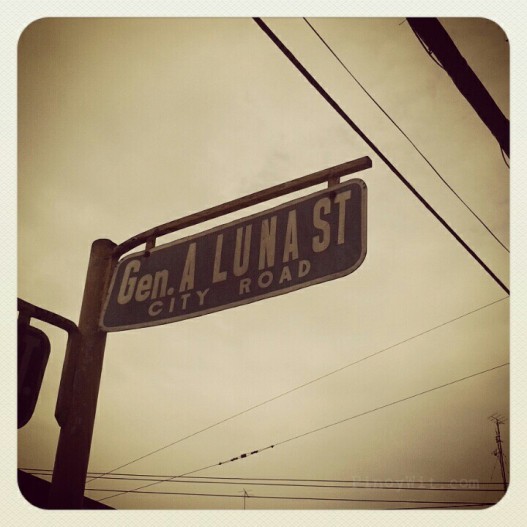
Other Posts You May Be Interested In:
- El Filibusterismo Index of Chapter Summaries
- Ten Best Filipino Music Videos (OPM) Featuring…
- Noli Me Tangere Index of Chapter Summaries
- The Rise of Felip and His Bisaya Songs - From P-Pop…
- Remembering Bantayan Island – Old Memories of a…
Reader Interactions
November 14, 2015 at 10:03 am
I can say nothing else but congratulate you in your writing a very informative and lively article. Hope to meet and talk to you in person in the future. 🙂
Recent Posts
- The Rise of Felip and His Bisaya Songs – From P-Pop Idol to Heritage Champion
- El Filibusterismo Chapter Summaries 36-39
- El Filibusterismo Chapter Summaries 31-35
- El Filibusterismo Chapter Summaries 26-30
Recent Comments
- Eloisa Pascual on The Rise of Felip and His Bisaya Songs – From P-Pop Idol to Heritage Champion
- Mica on The Rise of Felip and His Bisaya Songs – From P-Pop Idol to Heritage Champion
- Marilou Tinambacan on The Rise of Felip and His Bisaya Songs – From P-Pop Idol to Heritage Champion
- Beannaithe on The Rise of Felip and His Bisaya Songs – From P-Pop Idol to Heritage Champion

The most discussed topics 🔥

Spa with a View of the Taal Volcano at Qi Wellness Living in Tagaytay

Bulalo Point

Express your Love with Krispy Kreme’s “Dough-Notes”!

Korean Dream Adventure: Why I Deserve to be in the #KCreator Club
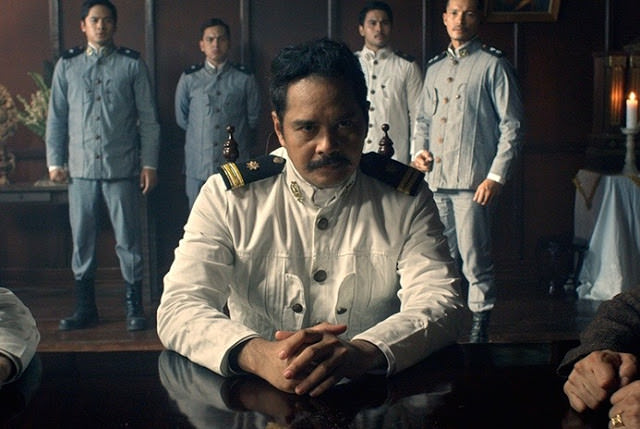
Bayan o Sarili: A “HENERAL LUNA” Review
By: gio potes, heneral luna trailer.
0 0 1 486 2776 Nuffnang Philippines 23 6 3256 14.0
Normal 0 false false false EN-US JA X-NONE
Good review! So excited to see this!
Go Gio! Galing ng review!
Let us know what you think after you see it 🙂
I could not agree more. Saw this movie on Saturday, and we have similar thoughts for this movie. Talk about "poetic justice."
We definitely need more local films like this 🙂
Leave a Reply Cancel reply
Your email address will not be published. Required fields are marked *
Notify me of follow-up comments by email.
Notify me of new posts by email.
This site uses Akismet to reduce spam. Learn how your comment data is processed .
Cinema Escapist
Explore and connect the world through a cinematic lens
Philippines
Review: heneral luna (philippines, 2015), by anthony kao , 9 may 16 00:36 gmt.
It’s always a guilty treat to watch a film in which America is the bad guy. There aren’t that many, probably because most nations that villainize America usually have other things to worry about besides competing with the Hollywood juggernaut. Though not from some place like North Korea, the 2015 Philippine blockbuster Heneral Luna is one of those films that star Americans as enemies.
While the Philippines are a staunch US ally today, they were also America’s first foray into colonialism. After losing the Spanish-American War, Spain handed their Philippine colony over to the United States in the Treaty of Paris. Taking control of the Philippines, however, was more complex than putting a signature on paper. The Philippines already had an independence movement and, taking advantage of Spain’s weakness and early tacit American support, they managed to establish a Republic over most of the archipelago before the Treaty of Paris took effect. As it became apparent that the Americans were going to be new colonial masters and not liberators, this First Philippine Republic decided to fight back, kicking off a war in which hundreds of thousands of Filipinos died at America’s hands. Then man who led Philippine forces into this conflict was General Antonio Luna , a former scientific researcher who quickly rose to become chief of the Republic’s army.
However, though there are scenes like when US soldiers kill women and children amidst a voiceover of John O’Sullivan’s famous essay on “manifest destiny”, America is, arguably, not the film’s primary antagonist. Instead, it focuses on conflicts of a more internal nature: Filipino v. Filipino, and those within Luna’s mind. This choice elevates the story from a simple patriotic gorefest (though there’s still plenty of patriotism and gore) to something more complex.
Yes, the film lionizes General Luna, but not to the excessive, almost heart-throbby extent of something like Simon Bolivar from The Liberator . The film shows Luna has deeply flawed — prone to anger, overly aggressive, and infected with a fatal stain of hubris. He gives no heartwarming speeches, no exhortations to “we happy few, we band of brothers”. Rather, he rallies troops with threats of arrest and “Article One” of his military code — ” anyone who disobeys the general’s orders will be executed immediately without trial.”
Luna’s most pernicious physical enemies are not Americans but his fellow countrymen. There are the deserters who flee right before his eyes. There’s the politicians who want to negotiate with the Americans. People like this are traitors; he can neither stomach nor compromise with them. At one point he even flies into an unprovoked rage, promising to defend the nation even if it means going against the President, Emilio Aguinaldo . It’s almost as if Luna’s patriotism blinds him to the realities of human nature — greed, self-preservation, fear. We do see some moments of clarity though. In a quieter moment with a journalist, Luna acidly resigns himself to the senselessness of his world — “it’s just Filipinos being Filipinos”.
Pronouncements like these make Heneral Luna a brave film. Like its namesake, it is unafraid to speak its mind. It goes through the pantheon of Filipino revolutionaries — the people today’s boulevards and warships are named after — and puts their imperfections on display. Revolution is not a dinner party, and Heneral Luna makes that all the more clear.
Heneral Luna — Philippines. Dialog in Tagalog and English. Directed by Jerrold Tarog. First released September 2015. Running time 1 hr 58min. Starring John Arcilla, Epy Quizon, Paulo Avelino, and Arron Villaflor.
Support the filmmakers and Cinema Escapist by buying a copy of this movie with our Amazon affiliate link !
Want more? Join our 30K+ followers on Facebook and Twitter .
You May Also Like
Review: the liberator (venezuela, 2014), by anthony kao, review: yamato (japan, 2005), review: katyń (poland, 2007), review: wolf warrior (china, 2015), by richard yu.
Film Review: ‘Heneral Luna’
The Philppines' foreign-language Oscar hopeful is a rousing historical epic set during the Philippine-American War.
By Richard Kuipers
Richard Kuipers
- ‘Invisible Nation’ Review: Taiwan’s President Tsai Ing-wen Fights For Her Country’s Survival in Vanessa Hope’s Compelling Documentary 2 months ago
- ‘Godzilla Minus One’ Review: The Kaiju Superstar Delivers Everything You Could Want From a Monster Movie 4 months ago
- ‘Furies’ Review: A Furious Tale of Female Revenge Set in a Hell-on-Earth Vision of Ho Chi Minh City 1 year ago

One of the most expensive and highest-grossing Filipino films of all time, “Heneral Luna” is a rousing, warts-and-all portrait of Gen. Antonio Luna, the brilliant and brusque strategist whose command of troops in the Philippine-American War (1899-1902) was cut short by betrayal from within his own ranks. Anchored by a charismatic central performance by John Arcilla (“Metro Manila”) and peppered with exciting action sequences, the pic has the all-around energy to overcome the odd moment of bumpy storytelling and prosaic dialogue. A worthy official submission in the foreign-language Oscar race and an entertaining history lesson for audiences everywhere, “Luna” reps an impressive achievement in large-scale filmmaking by prolific scripter-helmer-editor-composer Jerrold Tarog (“If Only,” 2007). Launched locally on Sept. 9, the pic grossed a whopping $5.3 million and has notched an impressive $200,000 on limited U.S. screens since Oct. 30.
It’s worth noting the film’s remarkable turnaround at the domestic box office. Initially released in 100 cinemas, “Heneral Luna” performed only modestly in its first week and was quickly withdrawn from more than half its screens. Following a spontaneous fan-led social-media campaign, audiences started turning up in droves, and the film was subsequently reinstalled in many theaters and went on to enjoy a highly successful nine-week engagement. Such a lengthy run is regarded as a minor miracle for a Filipino production, and Tarog has since announced plans to make another two films set during the same eventful era as “Heneral Luna.”
Announcing itself as “a work of fiction based on facts,” the pic is framed around a series of interviews granted by Luna to Jove Hernando (Arron Villaflor), a fictional newspaper journalist. Threaded into the narrative at well-judged moments, these lively conversations provide viewers with valuable insights into the general’s personality and assist greatly in keeping track of the story’s bulging inventory of characters and events. Much of Luna’s dialogue in these sections is squarely aimed at encouraging local audiences to ask questions about the evolution and identity of their nation, and to draw parallels between contemporary political events and those in Luna’s time.
A clear picture is immediately established of the state of affairs in the Philippines in late 1898. After more than 300 years, colonial ruler Spain has relinquished control and sold the islands to the U.S. for $20 million. Exactly where that leaves the newly self-declared First Philippines Republic and how it should respond to the first landing of U.S. troops on Filipino soil is hotly debated inside the shaky government of President Emilio Aguinaldo (Mon Confiado) and wheelchair-bound Prime Minister Apolinario Mabini (Epy Quizon).
It’s clear from the outset that “Heneral Luna” is a very different proposition from the majority of Filipino historical epics, which paint fawning portraits of the nation’s founding fathers. The rasping dialogue by Tarog and co-scripters Henry Francia and E.A. Rocha presents a government wracked by chaos, disunity and the readiness of key players to place personal interest ahead of the national interest by accepting U.S. domination without a fight.
When all this squabbling and bickering comes to the boil, Luna (Arcilla) is potently launched into the fray as a straight-talking, fiercely patriotic commander who cuts through everyone’s rhetoric and insists on pre-emptive strikes in order to save the fledgling nation. As he puts it: “I detest war, but I detest compromise more.” In the process of winning the argument Luna clashes fatefully with pro-compromise power brokers Pedro Paterno (Leo Martinez) and Felipe Buencamino. In a remarkable and highly effective piece of casting Buencamino is played by his direct descendant Nonie Buencamino, a highly regarded legit actor.
With the volatile political landscape well mapped out, “Heneral Luna” thunders into action. Given command of a motley collection of troops that could barely be called an army, Luna whips them into shape with inspirational speeches about nationhood and brilliant tactics that bring about several stunning victories on the battlefield. While paying full due to Luna’s military genius, Tarog does not shy from showing his weaknesses. Most glaring are his fanatical insistence on absolute obedience and moments when he lacks understanding and sympathy for peasants and farmers on whose land the war is being fought.
While following the traditional trajectory of a war movie, “Heneral Luna” is more fundamentally concerned with examining how internal rivalries proved the undoing of Luna and destroyed any chance of the Philippines gaining genuine and lasting independence. Tarog achieves the primary objective with distinction, but isn’t as successful when U.S. forces are center-frame; the momentum drops noticeably, and the dialogue between American characters including Gen. Arthur MacArthur Jr. (Miguel Faustmann) and Gen. Elwell Otis (Rocha) is frequently clunky and unconvincing. But the name of the game here is Gen. Antonio Luna, and for the overwhelming duration of its running time the film delivers on its promises.
Arcilla’s zesty performance brings full-blooded life to Luna’s reputation for inspiring both undying loyalty and enduring enmity. Surrounding him on the loyalty side of the equation are well-written and performed portraits of supporters including Gen. Jose Alejandrino (Alvin Anson), Col. Francisco Roman (Joem Bascon) and Capt. Jose Bernal (Alex Medina). On the opposite side of things, Ketchup Eusebio nails his portrayal of Capt. Pedro Janolino, a smarmy young officer whose refusal to obey Luna plays a critical role in the fortunes of the general and the war itself. Though given relatively little screen time, Mylene Dizon (“Aparisyon”) hits a winning note as Red Cross worker Isabel, a fictional amalgam of several women Luna was known to have been involved with.
A massive undertaking with approximately 100 speaking roles and a crew of 600, “Heneral Luna” impresses on all levels. Production design by Benjamin Padero and Carlo Tabije, art direction by Katrina P. Napigkit and costume design by Padero vividly bring to life an era that few viewers outside the Philippines will have seen on big or small screens. Cinematographer Pong Ignacio confirms his rising-star status with gorgeous widescreen lensing of lush rural areas, artful compositions in sequences inside the corridors of power and fluid, exciting coverage of the many combat set-pieces. Tarog’s traditional orchestral score is big and brassy when the moment calls for it, and nicely restrained when quiet is required. A high standard of excellence is achieved in pyrotechnics, vfx work and all other technical areas.
Reviewed at Hawaii Film Festival (Spotlight on the Philippines), Nov. 15, 2015. MPAA Rating: R. Running time: 119 MIN.
- Production: (Philippines) A Quantum Films (in Philippines)/Abramorama (in U.S.) release of an Artikulo Uno production. (International sales: Artikulo Uno, Manila.) Produced by E.A. Rocha. Executive producer, Fernando Ortigas. Co-executive producers, Leo Martinez, Ting Nebrida.
- Crew: Directed by Jerrold Tarog. Screenplay, Henry Francia, E.A. Rocha, Tarog. Camera (color, widescreen, HD), Pong Ignacio; editor, Tarog; music, Tarog; production designers, Benjamin Padero, Carlo Tabije; art director, Katrina P. Napigkit; costume designer, Padero; sound (Dolby Digital), Mikko Quizon; sound designer, Hit Prods., visual effects supervisors, Jauhn Dablo, Gaspar Mangarin, Walter Monte, Llewyn Jalimao; visual effects, Blackburst; line producer, Daphne O. Chiu; associate producers, Ria Limjap, Paolo Ortigas; assistant director, Crisanto B. Aquino: casting, Jame Habac, Jr.
- With: John Arcilla, Arron Villaflor, Mon Confiado, Mylene Dizon, Nonie Buencamino, Lorenz Martinez, Joem Bascon, Alvin Anson, Alex Medina, Ketchup Eusebio, Art Acuna, Archie Alemania, Epy Quizon, Leo Martinez, Perla Bautista, Bing Pimentel, Miguel Faustmann. (Tagalog, English, Spanish dialogue)
More From Our Brands
Aoc defends calling israel’s actions in gaza an ‘unfolding genocide’, billionaire marc andreessen’s longtime silicon valley estate just popped up for sale at $33 million, this lawyer is taking on dartmouth to fight for college athletes, the best loofahs and body scrubbers, according to dermatologists, former bachelor juan pablo galavis’ daughter auditions for american idol — did she make it to hollywood, verify it's you, please log in.

‘HENERAL LUNA’ – movie review and quotable quotes
- Mark Pere Madrona
- September 6, 2015
- education , entertainment , history , philippines

“ I do not believe that a biography of a man should be all praises. It should be both praise and criticism because it is not bad to show the human side of a person. You make him human by painting his defects .” – Teodoro Agoncillo (1912 to 1985), Filipino historian
Despite being a leading propagandist during the twilight years of Spanish regime and a revolutionary leader at the onset of the Filipino-American War, Antonio Luna remains one of the most unappreciated of all Philippine heroes. The movie ‘Heneral Luna,’ directed by Jerrold Tarog and developed by Artikulo Uno Productions, seeks to change that.
The movie, which will be shown in cinemas nationwide beginning this September 9, puts the spotlight on Luna’s heroic works and his unflattering personality (which eventually led to his assassination).
A hero with an unflattering personality? Isn’t that an oxymoron? The only reason it seems so is because countless historians in the past seems to have made it a point to portray heroes as flawless individuals – effectively making their work more like hagiographies instead of a fact-based account.

The movie shows Luna’s most valued character trait: his passion and uncompromising commitment to the cause of Philippine independence as well as his brilliance in military tactics. No less than Emilio Aguinaldo, the country’s first president, described him as the best war general under him (“ siya ang pinakamahusay kong heneral “).
However, the movie also discusses the aspects of his personality that made people see him as a repulsive human being. He is not a smooth-talker, and is too hot-headed. In other words, he is a “my way or the highway” type of person. That of course did not sit well for a lot of officials in Aguinaldo’s administration, causing Luna to have so many enemies.
Heneral Luna is neither led by showbiz A-listers that other historical biopics in recent years had (like Cesar Montano in ‘Jose Rizal,’ Jericho Rosales in ‘Baler,’ and Alfred Vargas in ‘Supremo’) nor backed-up by splashy promotional campaigns. Instead, it is relying on social media to heighten public interest. The producers have also organized special screenings in various schools to target history educators and students.
Filipino netizens always rant about not seeing enough quality content on the media (television and cinemas, particularly) in general. Now is a chance for us to show our support to a movie that not only shows the life of one of the most courageous Filipinos who ever lived but also discusses a critical part of our nation’s history.
Quotable quotes
“ Mas magandang mamatay sa digmaan kaysa magpasakop sa dayuhan .” –
2. “ Ano ba ang tingin niya sa Cavite? Ibang bansa ?” – When told that forces under Kawit Company will not be providing him with necessary reinforcements for a battle 3. “ Mas mahalaga ang papel natin sa digmaan kaysa sa anumang nararamdaman natin sa isa’t isa .” – A certain woman told Luna, emphasizing that petty conflicts over women are distracting the revolutionaries’ cause 4. “Hindi natin sila matatalo sa teknolohiya. Pero matatalo natin sila sa taktika.” – Antonio Luna on the Filipinos’ chances of defeating the Americans 5. “Hindi panlalait ang pagsasabi ng totoo.” – Luna to Felipe Buencamino, one of his tormentors 6. “Hindi ko ginusto na siya ay mamatay, pero naniniwala akong makatarungan ang nangyari. Malupit siya, abusado, mayabang!” – Felipe Buencamino on Antonio Luna
PLEASE LIKE THE FILIPINO SCRIBE ON FACEBOOK
About Author
The Filipino Scribe (TFS) is managed by Mark Pere Madrona, a multi-awarded writer and licensed professional teacher from the Philippines.
Mr. Madrona earned his master’s degree in history from the University of the Philippines-Diliman last 2020. He obtained his bachelor’s degree in journalism cum laude from the same university back in 2010. His area of interests includes Philippine journalism, history, and politics as well as social media.
Know more about him here: https://www.filipinoscribe.com/about/.
See author's posts
- Department of Education
My commentary re the viral DepEd teacher who berated students live on TikTok
- March 18, 2024

- #WalangPasok
- holiday announcements
#WalangPasok – April 4 2024 holiday in Antipolo City
- March 16, 2024

#WalangPasok – Class suspensions for March 22 2024
- March 13, 2024

#WalangPasok – Class suspensions for March 15 2024
- March 12, 2024

#WalangPasok – April 5 2024 holiday in Pangasinan
- March 8, 2024

#WalangPasok – March 22 2024 declared holiday in Cavite
- March 7, 2024
4 thoughts on “ ‘HENERAL LUNA’ – movie review and quotable quotes ”
General Antonio Luna is indeed a great hero, A well disciplined military officer worthy of emulation.
Just like what the American general said in the movie before bursting into laughter: “He was the only general they (Philippines) have”
And yet they killed him …
Leave a Reply Cancel reply
This site uses Akismet to reduce spam. Learn how your comment data is processed .
Pinoy Movie Blogger
Your Spoiler-Free Filipino Movie Review and Infotainment Blog.
September 11, 2015
Heneral luna (2015) movie review.

Reviews and previews of Hollywood and foreign language films and television series from then and now

- Movie Reviews
- First Peeks
- Heneral Luna (2015): Movie Review



0 comments:
Post a comment, watch movie trailers, search this blog, blog archive.
- ► January (2)
- ► March (2)
- ► August (4)
- ► June (10)
- ► February (9)
- ► January (14)
- ► November (2)
- ► October (32)
- Hotel Transylvania 2 (2015): Movie Review
- Labyrinth of Lies (2015): Movie Review
- Hellions (2015): Movie Review
- Black Mass (2015): Movie Review
- First Peek: The Angry Birds Movie (2016)
- Uncle John (2015): Movie Review
- Some Kind of Hate (2015): Movie Review
- First Peek: The Big Short (2015)
- Everest (2015): Movie Review
- Cooties (2015): Movie Review
- First Peek: Creed (2015)
- Insiang (1976): Movie Review
- First Peek: Bridge of Spies (2015)
- Maze Runner: The Scorch Trials (2015) - Movie Review
- First Peek: In the Heart of the Sea (2015)
- The Cut (2015): Movie Review
- First Peek - The Divergent Series: Allegiant (2016)
- Listening (2015): Movie Review
- First Peek: The Jungle Book (2016)
- Wolf Totem (2015): Movie Review
- First Peek: Deadpool (2016)
- Breathe (2015): Movie Review
- First Peek: The 5th Wave (2016)
- Goodnight Mommy (2015): Movie Review
- First Peek: Krampus (2015)
- A Brilliant Young Mind (2015): Movie Review
- First Peek: Macbeth (2015)
- Time Out of Mind (2015): Movie Review
- First Peek: The Danish Girl (2015)
- The Transporter Refueled (2015): Movie Review
- Contracted: Phase II (2015) - Movie Review
- Break Point (2015): Movie Review
- The Golden Dream (2015): Movie Review
- Dope (2015): Movie Review
- Filipino Shorts Special Screening: Finish Line (20...
- Blind (2015): Movie Review
- Dragon Blade (2015): Movie Review
- 7 Chinese Brothers (2015): Movie Review
- Zipper (2015): Movie Review
- Turbo Kid (2015): Movie Review
- ► August (30)
- ► July (29)
- ► June (38)
- ► May (41)
- ► April (34)
- ► March (34)
- ► February (17)
POPULAR POSTS

- Coming-of-Age
- Foreign Language
- Science Fiction
My Blog List

Featured Post
The conjuring 2 (2016): movie review.

Latest Review

- Subscribe Now
‘Heneral Luna’ Review: Essential viewing
Already have Rappler+? Sign in to listen to groundbreaking journalism.
This is AI generated summarization, which may have errors. For context, always refer to the full article.
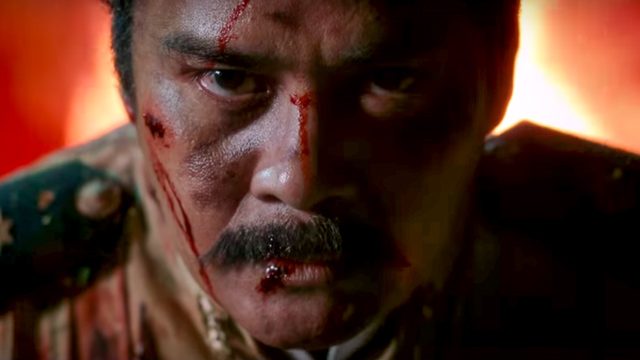
“History was written by those who hanged the heroes.”
The quote from Mel Gibson’s Braveheart (1995) rings truest in the Philippines, where history, or at least the one that was crafted to instill within the people an illusion of a pristine and glorious nation, is as fragrant as a little girl’s fairy tale. Filipinos have been led to believe that the country was birthed from the untainted bravery of our forefathers who dispelled vicious colonizers with both their words and weapons.
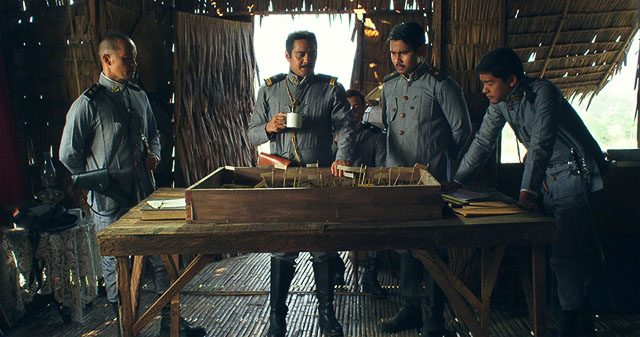
However, this history that we are enjoying is one painted with half-truths and veiled lies. Those details of the nation’s past that may or may not have a more lasting impact on our state as a people are either left as footnotes or completely forgotten and neglected. Distilled of dirt and sin, all that is left are perfumed memories that can only fuel a pride that may be as misplaced as it is dangerous.
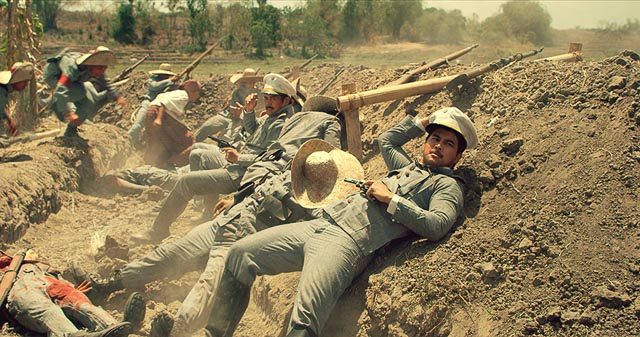
History in cinema
Local cinema has mostly been complicit to this bamboozlement. Most of the films that have been made to tackle the nation’s history have portrayed the prominent men and women who fought for our freedom as saints, almost bereft of faults and mistakes. (READ: Heneral Luna: Para sa bayan o sarili? )
Line them all up, from Carlo J. Caparas’ Tirad Pass: The Story of Gen. Gregorio del Pilar (1997) to Marilou Diaz-Abaya’s Rizal (1998) to Mark Meily’s El Presidente (2012), and all you’ll see are narratives that lead only to the goal of sanctifying the historical figures they center on. Even Enzo Williams’ Bonifacio: Ang Unang Pangulo (2014) ended up putting its titular hero on a pedestal even if it had the audacity to dwell on some of the details of the hero’s death at the expense of another historical figure. (READ: 10 movies featuring PH national heroes )
The few films that managed to shape the historical figures as actual humans instead of icons and idols are films with too small a budget to be able to pull off the requirements of a period piece. Mike de Leon’s Bayaning 3 rd World (2000) ingeniously dissected the famous myth of Rizal. Mario O’Hara’s portrayal of Andres Bonifacio in Ang Paglilitis ni Andres Bonifacio (2010) is so laced with humanity that a lot of its viewers considered it close to sacrilegious.
Bridging the divide
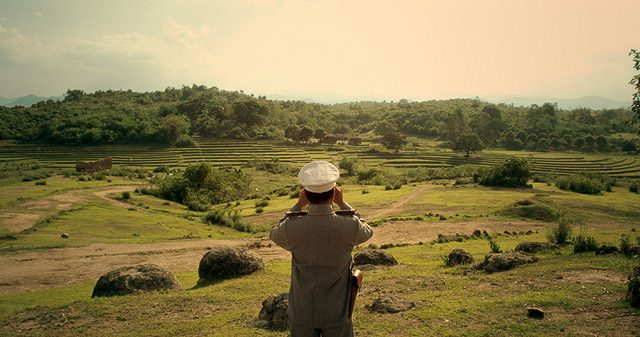
The divide between the gutless but glossy epics and the braver but more intimate independent productions is so immense. As a result, movie-going masses are fed with didactic rubbish that are designed primarily to treat viewers like kids who prefer their stories visualized like soap operas than read from a textbook, oblivious of the fact that there exists another vein of historical cinema that dares to ask more questions than provide the same answers over and over again.
Jerrold Tarog’s Heneral Luna provides that essential middle ground. It is a film that is crafted with just enough meticulousness a reasonable budget can afford but does not pander to common but erroneous knowledge and wisdom. Instead, it goes straight to the point of unravelling those details in history that were left out by those who hanged the heroes. Tarog’s film is an immense risk, one that is probably fueled not by quick profit but by a profound desire to unmask demons of idols.
Tarog cleverly starts his campaign with Antonio Luna, who has always been known as a gifted military strategist, capable of leading an army composed of farmers plucked out of nowhere to victory against both Spanish and American foes. His tragic demise paints a picture of what was wrong and what is still wrong in the country.
In a way, Luna personifies the fractured hero that defines the country’s fractured history. His life, like history, has been severely whitewashed with great deeds brought to the fore while deficiencies in character are veiled out of sight.
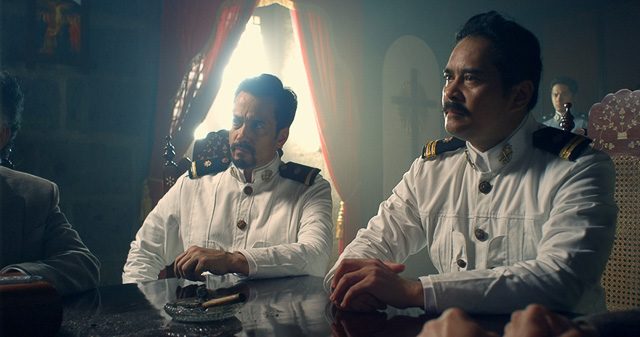
What Tarog does to Luna is to treat him with enough respect to release him from being just an object of this victor’s history we have been blindly celebrating throughout the years. Tarog makes him human, drawing him with virtues as well as warts, and in so doing, creates an essay of everything that is wrong in our nationhood.
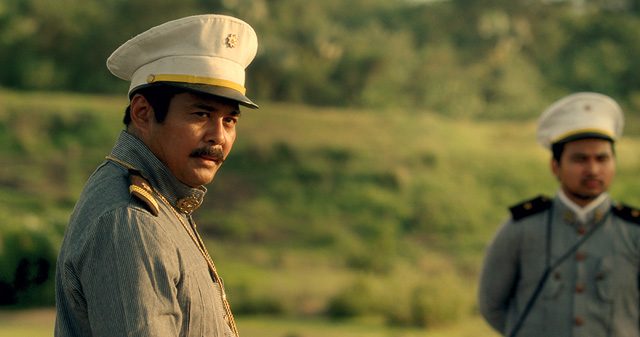
Intent and craft
What is most fascinating about Tarog’s Heneral Luna is that it does not place its intent ahead of its craft. The film is beautiful to gaze at. The score made by Tarog is subtle during moments when the drama does not require distracting melodies, but hauntingly intense at the high points.
The film is plotted precisely, never really focusing on the larger aspects of history but on the smaller stories that perfectly construct a hard-hitting picture of a revolution built on suspicion and dissent.
John Arcilla is excellent as Antonio Luna. His performance displays an innate understanding of the character. Driven not by boring reverence but by his own interpretation of what exactly is noble madness, Arcilla is exhilarating to behold in his various interpretations of Luna’s many personalities. (READ: John Arcilla on bringing ‘Heneral Luna’ to life )
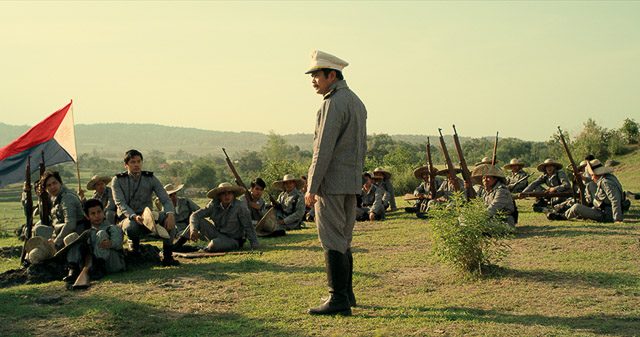
As ferocious leader of a seemingly hopeless army, he is rabid and stern. As a pal to his trusted lieutenants, he is unpredictably hilarious. As son to a devoted mother, he is heartbreakingly dear, echoing the same sentiments he has for his family as if it were for his motherland.
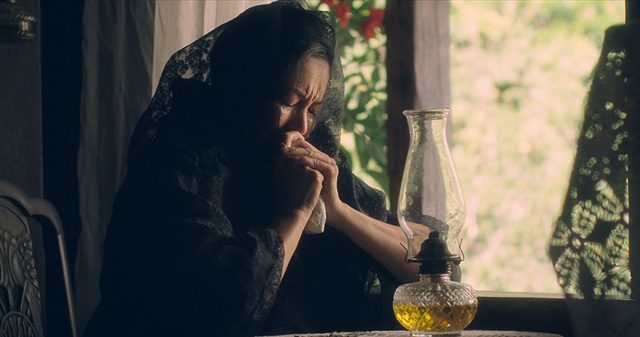
While Arcilla dominates the picture with his prodigious performance, Mon Confiado comfortably stays at the side, playing Emilio Aguinaldo, portrayed in the film as a cunning puppeteer instead of the victorious liberator of the Philippines, with such engrossing sobriety. Confiado’s Aguinaldo is vicious in his quietude, amply balancing Arcilla’s Luna, who is as boisterous as he is outwardly violent. It is a generous performance, one that gives the film deeper layers as opposed to being just a battle of wits between prominent figures of the past.
Beyond stereotypes
Ambiguity is not typically regarded as a virtue when it comes to historical films about national heroes. Most of the films that have tackled our history past have a definite agenda of feeding their viewers with a very general emotion of pride for one’s country.
Heneral Luna , while precise in its storytelling and in its depiction of the major players of the revolution, evokes ambiguous emotions about a nation that has been revealed to be built on a rickety foundation of questionable motives and personalities.
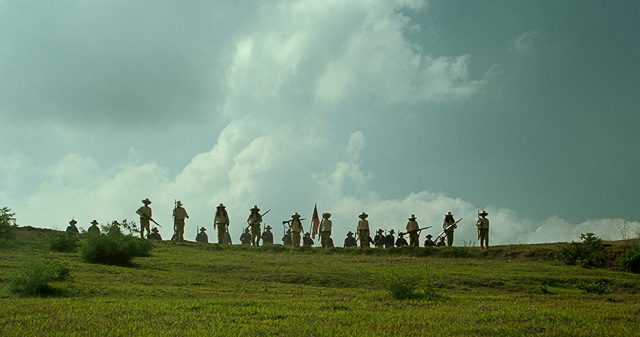
Tarog is as blunt as he is poetic. He does not shirk away from detailing the violence of war. In fact, he often laces the gruesome deaths he stages with humor, perhaps to reflect on the folly of war despite its inevitability. Amidst the indulgence in spilling blood and exploiting gunpowder is a tenderness that is genuinely affecting.
Heneral Luna begs you to look beyond the stereotypes of both the man and the history that has been made around him. It begs you to see everything with clearer eyes, with just enough cynicism, and more importantly, without the influence of those who have the greatest to gain for turning our history into a pageant of brave and unblemished patriots, of those who hanged heroes without owning up to their sins. – Rappler.com
Francis Joseph Cruz litigates for a living and writes about cinema for fun. The first Filipino movie he saw in the theaters was Carlo J. Caparas’ ‘Tirad Pass.’ Since then, he’s been on a mission to find better memories with Philippine cinema. Profile photo by Fatcat Studios.
Add a comment
Please abide by Rappler's commenting guidelines .
There are no comments yet. Add your comment to start the conversation.
How does this make you feel?
Related Topics
Recommended stories, {{ item.sitename }}, {{ item.title }}, the role of ppcrv: education for responsible voting.

Mga kapangyarihan at katungkulan ng mga halal na opisyal – Isang serye ng Rappler
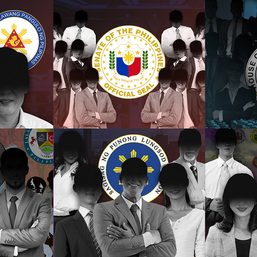
Over 150 groups make agenda to help voters choose bets for elections

Pork barrel ghost haunts candidate Marcos

[PODCAST] Beyond the Stories: Ang milyon-milyong kontrata ng F2 Logistics mula sa Comelec
![movie review ng heneral luna tagalog [PODCAST] Beyond the Stories: Ang milyon-milyong kontrata ng F2 Logistics mula sa Comelec](https://www.rappler.com/tachyon/2021/11/newsbreak-beyond-the-stories-square-with-topic-comelec.jpg?resize=257%2C257&crop_strategy=attention)
2019 Philippine elections
Sc junks petition against comelec over voting receipt implementation, despite legal challenges, comelec votes 4-1 to proclaim duterte youth.
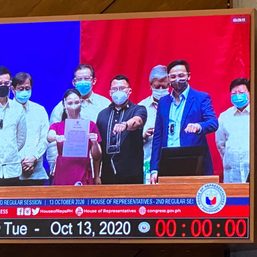
Controversial Ducielle Cardema of Duterte Youth joins House session
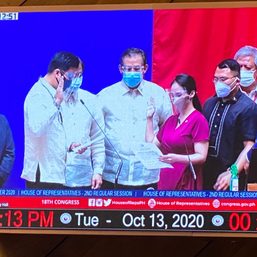
Guanzon dissents: Duterte Youth proclamation a ‘betrayal of Constitution’
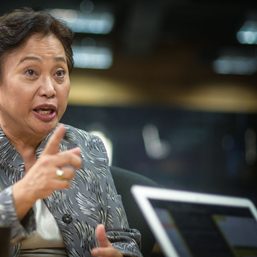
Supreme Court: Party-list formula stays, 2019 winners unchanged

Checking your Rappler+ subscription...
Upgrade to Rappler+ for exclusive content and unlimited access.
Why is it important to subscribe? Learn more
You are subscribed to Rappler+
Social Media Icons
Heneral luna - movie review.
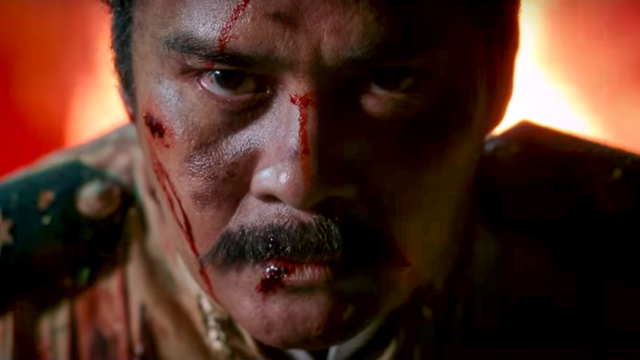

{{posts[0].title}}
{{posts[1].title}}
{{posts[2].title}}
{{posts[3].title}}

Dekada '70 - Movie Review

Seasons, starring Lovi Poe and Carlo Aquino premieres on Netflix on July 7

SM Cinema is bringing BTS' 'Bring the Soul: The Movie' to the Philippines

Hele Sa Hiwagang Hapis (A Lullaby To The Sorrowful Mystery) - Movie Review

Anino Sa Likod Ng Buwan - Movie Review

'The Walking Dead' to be tagalized on TV5

A running list of Filipino BL series you can watch

Every episode of Voltes V, Daimos now streaming on iflix

Jessica Jones: Episode 3 and 4 Review

Review: Fascinating 'Goyo: Ang Batang Heneral' is a critique on heroes
The Definitive Voice of Entertainment News
Subscribe for full access to The Hollywood Reporter
site categories
‘heneral luna’: film review.
Jerrold Tarog’s historical drama about a military commander's struggle for independence is the Philippines' submission for the best foreign language film Oscar next year.
By Clarence Tsui
Clarence Tsui
- Share this article on Facebook
- Share this article on Twitter
- Share this article on Flipboard
- Share this article on Email
- Show additional share options
- Share this article on Linkedin
- Share this article on Pinit
- Share this article on Reddit
- Share this article on Tumblr
- Share this article on Whatsapp
- Share this article on Print
- Share this article on Comment

Paying tribute to a heroic military commander spearheading the Philippine struggle for nationhood at the end of the 19 th century, Heneral Luna is a sturdy, stirring if perhaps sometimes simplistic historical epic about bravery and treachery in a country at war. Based on the final years of Antonio Luna , a European-educated scientist-turned-soldier who was murdered by his rivals when he was just 32, Jerrold Tarog ’s big-budget blockbuster has generated immense buzz in the Philippines. Local audiences have warmed to John Arcilla ’s high-octane turn as Luna and also how his story mirrors the chaos of contemporary Philippine politics.
A hearts-and-minds piece serving a primer in the Southeast Asian nation’s history and two hours of relentless swashbuckling drama, Heneral Luna has now been selected as the country’s submission for the Best Foreign Language Film Oscar next year . While the film does thrive on some universal truths about the futility of ideals in politics, its appeal beyond the Philippines and its global diaspora might be limited. Meanwhile, its mainstream production values — an achievement in itself at home, given its standing as a production independent from the local major studios — might hinder its fortune on a festival circuit seeking either genre-benders like that of Erik Matti’ s, or grittier fare from critical darlings like Lav Diaz , Adolfo Alix Jr . or Jun Robles Lana .
Related Stories
James zimmerman's acclaimed nonfiction book 'the peking express' set for movie adaptation (exclusive), shannen doherty, catherine zeta-jones and more react to kate middleton's cancer reveal.
Tarog’s mission in reconstructing his country’s national narrative is pretty obvious, given the way he begins the film with an on-screen text stating how “bigger truths about the Filipino nation” could only be broached by mixing reality and fiction. His pedagogical objectives are manifested in the film’s framing device of Joven ( Arron Villaflor ), a fictional character whose name is Spanish — the lingua franca in colonial Philippines in the 19 th century — for “young man.” Heneral Luna is meant to be this generic bespectacled journalist’s observations of the life and death of a national hero. He begins the film listening to Luna recalling his rise to power — the recollections visualized as a long flashback — while he then gets to witness the general in action, during his final battles against foreign forces and then adversaries within his own ranks.
Read More ‘Shadow Behind the Moon’ (‘ Anino sa likod ng buwan ‘): Vladivostok Review
Shunning the inconvenient truths of Luna’s early-life brushes with politics — he started out advocating political reforms rather than outright revolution — the film begins in 1898, when he has already delved headlong into the armed struggle and is the commander of the Philippine Republican Army. By then, the U.S. military have already defeated Spanish colonialists and readying themselves to annex the Asian archipelago, and Luna is busy steering the independence movement towards a direct confrontation with a superpower aiming to gain a toehold in Asia .
His boldness contrasts sharply with the meek, reconciliatory voices which dominate the movement. While Luna is constantly at loggerheads with the former colonial-era apparatchiks who have reinvented themselves as pro-independence leaders, his biggest adversary here is actually the movement’s leader Emilio Aguinaldo ( Mon Confiado ). While Luna is shown living and working alongside his soldiers and talks his talk of the need to put country before family and everything else, Aguinaldo operates behind a neat desk — an indecisive man under the sway of his backers, his cronies and even his mother.
This is a man who has previous experience killing off his dissenting comrades, as in the case of the execution of rebelling commander Andres Bonifacio , a brutal murder glimpsed in a brief flashback, and serving as the harbinger of things to come. With Luna’s demise very much predestined, Tarog’s film plays out a whirlwind j’accuse in which a warrior defies his double-dealing detractors, rages against the dying light and lurches towards a grisly end.
Read More Oscars: Thailand Picks ‘How To Win at Checkers (Every Time)’ for Foreign-Language Category
And the film hardly strays off message: Luna’s lover, Isabel (a fictional amalgamation of the general’s many partners, and played here by Mylene Dizon ), turns out to be as audacious and patriotic. After Luna’s laments in bed about war being “a cross I have to bear,” Isabel — who also happens to be a leader of the local Red Cross chapter — ends their relationship, proclaiming their respective public duties as more important than their clandestine affair.
Heneral Luna does have its lighter moments, such as the general’s near-slapstick attempt to commandeer a train for his soldiers or his gallows humor while trapped in the trenches. But comic relief is rare in this bulldozing epic about a selfless patriot in a dangerous age, and the film is filled with scenes and dialogue highlighting Luna’s vision of his country being free from external domination (namely the US, seen here butchering and bayoneting locals with impunity) and internal division (as Luna enforces standard-issue uniforms to rein in clan-building commanders).
While the odd historical anachronism does mar the film — such as Woodrow Wilson ’s “manifest destiny” speech from 1920 being used to augment the argument of U.S. expansion in the 1890s — the message here is certainly loud and clear. Charging onwards unflinchingly, Heneral Luna trades in as little subtlety as its titular hero does.
Production companies: Artikulo Uno Productions
Cast: John Arcilla , Mon Confiado , Arron Villaflor , Mylene Dizon
Director: Jerrold Tarog
Screenwriter: Henry Hunt Francia , E.A. Rocha , Jerrold Tarog
Producers: E.A. Rocha
Executive producer: Fernando Ortigas , with Leo Martinez, Vicente Nebrida
Director of photography: Pong Ignacio
Production designer: Ben Padero
Costume designer: Carlo Tabije
Editor: Jerrold Tarog
Casting Director: Jaime Habac Jr .
Music: Jerrold Tarog
International Sales: Artikulo Uno Productions
In Tagalog and English
No rating, 118 minutes
THR Newsletters
Sign up for THR news straight to your inbox every day
More from The Hollywood Reporter
Oldenburg winner ‘the black guelph’ gets u.s. release (exclusive), china box office: ‘kung fu panda 4’ opens to $25.9m during quiet weekend, ‘ghostbusters’ star ernie hudson talks inequitable treatment, pay disparity: “it’s not quite that simple” to blame racism, mark wahlberg reflects on filming ‘the departed’: “i was a little pissed about a couple things”, david dastmalchian on how ‘late night with the devil’ reconnected him with heath ledger’s joker, ‘ghostbusters: frozen empire’ scares up okay $45m box office opening after all.
Academia.edu no longer supports Internet Explorer.
To browse Academia.edu and the wider internet faster and more securely, please take a few seconds to upgrade your browser .
Enter the email address you signed up with and we'll email you a reset link.
- We're Hiring!
- Help Center

Film Review on Heneral luna and Sakay

A Film Review on Heneral Luna (2015) and Sakay (1993) Directed by Jerrold Tarog and Raymond Red "May mas malaki tayong kalaban sa mga Amerikano-ang ating sarili."-Gen. Luna "Ganito ba talaga ang tadhana natin? Kalaban ang kalaban? Kakampi ang kakampi? Nakakapagod."-Gen. Luna
Related Papers
Angelo J Aguinaldo
ABSTRACT Artifacts displayed at the museum of the NHCP-Emilio Aguinaldo Shrine include weapons and ammunitions that were used during the Philippine Revolution. These include kris and knives donated by Sultan Kiram of Sulu, father of Princess Tarhata, during the revolution, shotgun bullets, bullets, 1893 Spanish Mauser bolt-action 7 mm rifle, parts of Remington rifles, and a replica of a small mounted cannon. The collection is part of the estate Gen. Aguinaldo donated to the national government in 1963 and ever since they were made accessible for viewing by the public, they have generated a lot of interests especially among the young visitors. If these things could talk it would be amazing since it would bring life to how Filipino revolutionists fought the well-equipped Spanish army. Historical accounts indicate that the Filipinos were indeed poorly armed. Insufficient arms and ammunition was a challenge in fighting the Spanish Army, who, with their long arms and other superior weapons, seemed invincible. The Katipunan weapons strength consists mainly of the familiar work bolo, daggers, and other bladed weapons. It is not surprising since early colonists often carried them as indigenous tool that were extremely useful against the geography. They had become important tools among the many Filipino farmers and laborers before they joined the revolution. In terms of guns, the early colonists were dexterous in handling arquebuses ( muzzle-loaded firearms) and muskets. Though these weapons may not compare to the 19th century standard rifles of the Spanish forces, the dexterity the Filipinos in the use of these modern weapons during the revolution is a thing to reckon. Other salient aspects of the revolution like issues on fund, tactics, and managing an army are equally seen as crucial. This paper that looks into the roles these weapons played and into the issues concerning the creation of the republican army, would be of great help in understanding how the Philippine Revolution was fought. The details provided herein, hopefully, shall paint a human face on history. Key terms: Philippine revolution, bladed weapons, Mauser, Remington, cannon, Philippine army
RELATED TOPICS
- We're Hiring!
- Help Center
- Find new research papers in:
- Health Sciences
- Earth Sciences
- Cognitive Science
- Mathematics
- Computer Science
- Academia ©2024
Did You Know?
- Crazy Credits
- Alternate Versions
- Connections
- Soundtracks
Photo & Video
- Photo Gallery
- Trailers and Videos
Related Items
- External Sites
Related lists from IMDb users

Recently Viewed

Manunuri ng Pelikulang Pilipino (MPP)
The Filipino Film Critics
Heneral Luna
HENERAL LUNA: APPRECIATION AND RESERVATION
Nicanor G. Tiongson
In the last half century Heneral Luna has emerged as a cinematic phenomenon, not only for its budget (at 80M plus, one of the biggest in recent history) but for the tremendous reception it got at the box-office, with shows extending to many weeks as word of mouth spread like wild fire and eventually earning an unprecedented gross income of P 240M when it closed. Such reception seemed to have been warranted by a script that offered some very sharp insights into Filipino society, and by the superior quality of its direction, acting, cinematography, and editing. Heneral Luna was food for the eye, the brain, and the heart.
Covering the period from around 13 August 1898 to 5 June 1899, the screenplay merges fact and fiction to flesh out the character of General Antonio Luna, General-in-Chief of the Philippine armed forces, as he is defined by his efforts to transform the scattered military units of the revolution into a professional fighting army for the Republic, his conflicts with the vacillating Emilio Aguinaldo, the opportunistic ilustrados , and undisciplined soldiery, and his tragic assassination in Cabanatuan.
Through this engaging narrative, the screenplay of Henry Francia, E.A. Rocha, and Jerrold Tarog articulates its most important insight, that in the struggle to defend our independence from the American invaders, “we (Filipinos) are our own worst enemies” because we cannot think beyond the narrow confines of clan and family. In one scene, Luna lashes out at the ilustrados who refuse to go to war with the Americans because it would be bad for their businesses and their families. In another, Luna uses a stick to drive out relatives of officers who occupied the train that was supposed to transport much-needed troops and ammunition to Bataan. Practicing what he preached, Luna allowed his brother Joaquin to languish in jail to atone for the drunken brawl he caused because of a woman. In a society that continues to enthrone family as the supreme institution, the thought that family is also the principal obstacle to our unity as a nation is an unsettling epiphany that is much needed in our times.
Just as the novel to contemporary audiences perhaps is the revelation that the struggle against the Americans was much weakened by the factionalism among the leaders of the revolution, with a minority composed of Mabini and Luna absolutely dedicated to the ideal of independence, being undermined by a majority of wealthy entrepreneurs who thought nothing of switching loyalty from Spain, to the Republic, and then to the US to protect their own interests. Such a revelation cannot but resonate with contemporary Filipinos who have witnessed the shameless turncoatism of their political leaders from 1946 to the post-2016 elections period. In Luna , the present plays out in the past, and we get to understand how the country has been betrayed by its leaders over and over again.
Ang one of those leaders was Emilio Aguinaldo, whose commitment to the cause of independence was marred by his obsession with protecting, consolidating, and expanding his hold on power. Thinking like a political warlord of our times, he glossed over the lack of discipline among Cavite generals and troops and tolerated the insubordination of Captain Pedro Janolino, because he believed that the only loyalty he could count on was that of his fellow Cavitenos. Against Mabini’s better judgment, Aguinaldo allowed the anti-Luna elements to multiply, setting the stage for the assassination of the general he most (but wrongly) feared as his rival for power. The erstwhile gobernadorcillo of Kawit simply could not rise above his parochial fears to the demand of being the president of a nation, thereby losing sight of the greater ideals that he had set out to serve. To put his fears to rest, Bonifacio and Luna had to be sacrificed. And when Luna was finally killed, Aguinaldo aggravated his guilt by letting the murderers go scot-free and eliminating the remaining supporters of Luna.
But where most of the men are flawed, the women come out as brave and decisive, whether as uniformed soldiers at the front lines or as volunteers of the Red Cross attending to the sick and wounded. The fictional Isabel, Luna’s sweetheart, sacrifices her relationship with the general so that both of them can better serve the cause of independence that is higher than them. And when she and her friends later intervene in the in-fighting between Luna and Mascardo to prevent unnecessary bloodshed, Isabel chides them both for acting like children. In this film, the women are liberated – and liberating.
Happily, the gravitas of the film is matched by its dynamic storytelling, which results from its masterful direction, powerful acting, and innovative cinematography and editing. Known for small-scale indie films like Confessional, Mangatyanan , and Sana Dati, Tarog in this film rises to the challenge of an epic work. He proves himself a master of the mise-en-scene in long interior scenes, such as the sequences in Aguinaldo’s office where the president first meets ith Mabini, Paterno, Buencamino, with Mascardo later walking into the frame, which segues to the scene where Paaterno and Buencamino disappear into a backroom as Luna presents his resignation to Aguinaldo but instead gets permission to build his Cordillera fortification, which then segues to the scene where Aguinaldo transfers to the sofa opposite his desk and listens to all the reasons why he must get rid of Luna. The way the characters move around the set clarifies the relationships between them as well as the shifting of Aguinaldo’s point of view about Luna, whom he now begins to regard not as an asset but as a threat. This last scene becomes dubiously powerful because it is intercut with shots of Luna playing flamenco-type music on his guitar, while sitting on the edge of his bed in front of an open capiz window framing a full moon fiercely shining in the night sky.
Fresh and effective too is Tarog’s handling of the exterior scenes. In the first battle scene, he allows us to see both the large formations and encounters and the individual interactions and movements of Luna and the soldiers under him. In the confrontation scene between Luna and Mascardo, he holds us captive from beginning to end with alternating long shots, top shots, and close ups that allow us to witness the movement of troops and the changing emotions of the contending generals. In the assassination sequence, he builds the tension through acting, camera movement and angles, and editing, climaxing in the carnage where the camera assumes the point of view of the conspirators circling around and wielding their bolos at Luna.
Powerful are the performances of John Arcilla and the (mostly theater) actors he is pitted against. With an uncanny resemblance to Luna (except that Luna was younger), Arcilla captures the sincerity and the fervor of Luna’s love for country, as well as his defining (and self-destructive) traits – impulsive, explosive, and eventually, implosive. For this role Arcilla had been amply prepared by playing Luna in two Tanghalang Pilipino productions years back. With no big stars in the principal cast, the film delivers memorable acting from the ensemble, notably from Nonie Buencamino (Buencamino), Leo Martinez (Paterno), Archie Alemania (Rusca), Joem Bascon (Roman), and Mylene Dizon (Isabel).
Storytelling in Luna is at once visual, unusual, and arresting. Cinematographer Pong Ignacio uses a top shot to follow Antonio Luna on horseback charging into the American lines, and later, the Bernal brothers, also at full speed on horseback, separating ways at a crossroads to avoid arrest and mislead their assassins. In the assassination scene, the camera turns into one of the conspirators as it shuttles back and forth between the unsuspecting Luna entering the convent and the other conspirators lurking in the corners and doorways itching to pounce on him. Using a crane, the camera first records the arrival of Luna at camp one morning through an ordinary tight shot and then moves up to reveal the thousands of “volunteers” that he had rounded up from different camps to help dig the trenches in Bagbag. In one long take, Ignacio shoots the nostalgia sequence fluidly – from the Christmas dinner to the painting of the La Parisienne to the publication of La Solidaridad to the execution of Jose Rizal to the fencing match between Juan and Antonio Luna. Finally, the camera hovers like a bird around Luna as he sits atop a hill before the tragedy, showing him alone and lonely, far from and above the madding crowd, as he thinks about his destiny and decides to follow it because “a man who has feelings is not a slave.”
And what the camera captures, editor Tarog weaves together in a truly fascinating and meaningful way. The exchange of telegrams between Luna in Kalumpit and Mascardo in Arayat and their personal reactions to these are tightly edited in a sequence of crisp shot takes, to help build the tension between them, up to the confrontation. The brutality of the American conquerors is shown in a montage of scenes which visually contradict the voice-over of an American dishing out Imperialist rhetoric about America’s Manifest Destiny. At the end of the film, the testimonies of Aguinaldo and Buencamino insisting on their innocence in Luna tragedy are belied by the scenes of the repeated hacking and shooting of Luna’s dead body, the frantic search for the incriminating telegram, the despolation of Luna’s body, and the search for and murder of the Bernal brothers. The film ends with the voices of Luna and the interviewer Joven declaring that “it is better to die in the field of war than accept foreign rule” as the huge Philippine flag hanging on Luna’s wall slowly burns from bottom up, illustrating how independence was slowly devoured by the flames of personalism and factionalism among the leaders of the Republic.
But even as Luna must be praised for its achievements, certain ideas and images it propounds must be re-examined. The film begins with a caveat that it has “taken liberties” with the “depiction of historical figures and the order of historical events”, which to my mind was not necessary, highly inadvisable, and not permissible. Historical facts are immutable and, while fictionalization is often necessary to fill in the lacunae and create believable characters and coherent stories, such fictionalization must build on given facts, not bend the facts to suit the fiction – precisely because the producers have opted to do a historical film, not simply a period film. The film’s disregard for historical facts is evident in the lack of inadequacy of research on basic data. For example, the old name of what is now Plaridel town is not Quinga (pronounced Kingga in the movie), but Quingua (pronounced Kingwa) because the “g” on the latter is a Spanish soft “g”. Luna was a pharmacist by training, and a chemist by occupation. He was not a doctor as his mother says during her last visit to Luna. The first shot that started the Philippine-American War was fired at 9 pm on 4 February 1899 on San Juan bridge that connects Sta. Mesa on one side and San Juan on the other, with the river serving as the demarcation line separating the territories held by the Americans and those controlled by the Filipinos. It was near that bridge on San Juan side (therefore the Filipino side) that US Private Willie Grayson cried “Halt” before firing at the Filipino soldier who did not heed his call. Setting this incident on a newly-graded dirt road in the open field at high noon changes and confuses the nature of the confrontation making it a simple accidental meeting between American and Filipino soldiers. Furthermore, it makes the Filipinos looks like the trespassers when the opposite was true. Lastly, the open-breast attack launched by the 6 Filipino soldiers against the 20 armed Americans from a distance of about 200 meters makes the Filipinos look idiotic and the whole scene illogical and ridiculous.
In a historical film, production design is expected to be well-researched and faithful to the period and material culture of the film, because on it depends the texture, ambience, and credibility of the film. While the film used buildings that were old, many modern additions to these buildings were not even masked. The church of Baras, Rizal which was used for the Cabanaturan church stands on a huge platform whose railings had newly cemented pasamano and a convenient door which was very modern in design (used as background for Rusca’s gunfight with the Kawit soldiers). The bridge on which American soldiers massacre a Filipino family in the Philippine-American war montage looks like it was recently built by DPWH. In the church where Luna and his men pray before they go to war, the statues of the Virgin of Lourdes and the Virgin of Fatima are anachronistic. The devotion of Lourdes came to the Philippines only in 1890s and there was only one big image newly-installed in the Capuchin church in Intramuros while the Virgin of Fatima appeared to the three children only in 1917, more than a decade after the Philippine-American war. Mass-produced contemporary santos from commercial stores in Quiapo are placed on small tables and pedestals at the foot of the stairs of the Cabanatuan convent, or appear on makeshift altars with lighted candles in the convent of Bulacan. In Isabel’s room, the bed and tables are draped in yards of gantsilyo covers, but this kind of crochet was introduced only in the 1920’s.
Most of all the costumes leave much to be desired. While many of the soldier and peasant costumes are acceptable, the red pants of the Cavite troops (designed to show their refusal to follow the prescribed uniform of the army under Luna) would have been ill-advised, and definitely impractical, because they would have been easy targets on the battlefield. The costumes of the ilustrados in the two Aguinaldo meetings were European pants and coats (some with vests under the coats) but of different styles and periods. European clothes were usually worn only for pictures, weddings, or one’s funeral. For ordinary occasions and in the tropica heat, upperclass men would have worn light-colored cotton Americana abierta or Americana cerrada (if at all) but most probably the formal baro with canes and hats. Generals and soldiers would have been in uniform, including Aguinaldo, who is here made to wear the white suit and butterfly tie that he wore in his old age. And so with the costumes of the women, who in all their outdoor scenes are overdressed, wearing embroidered baro and panuelo of the 1890s (sometimes not even matching or using contemporary fabrics), which are wrongly worn with saying de kola of the 1930s (here worn without the required enaguas or half slips). For such scenes in the 1890s, the women would have opted for ankle-length siesgo skirts (of equal length all around) with enaguas underneath and a tapis over it, and on top of a simple cotton baro over undershirt, and a large panyo, not panuelo, to cover the shoulders or the head if need be. It is surprising that up to now, after the publication of several scholarly studies on Filipino costumes of the 19 th and 20 th centuries, production designers continue to produce period costumes that are more products of fantasy than of research.
Some of the liberties taken with the dates and positions of characters lead to a confusion of relationships between these characters. In the first ilustrado meeting which is supposed to be happening around 13 August 1899 in Bulacan, Paterno is identified as head of cabinet and Mabini as prime minister. On said date, Mabini was an adviser off Aguinaldo, becoming the latter’s head of cabinet and prime minister only after the inauguration of the Republic in Malolos on 23 January 1899. On 13 August 1899, Paterno was not yet with the Revolutionary government, joining it only in September 1898 in Malolos when he was elected president of the Malolos Congress. Paterno was appointed head of cabinet, only after Mabini’s resignation made effective 7 May 1899 so it is preposterous to have Mabini as prime minister and Paterno as head of cabinet sitting at the same table. Moreover, Aguinaldo’s office in August 1899 was in Bacoor not Bulacan, because the move to Malolos happened only after the American take-over of Intramuros on 13 August. Lastly, when Luna was assassinated on 5 June 1899, Mabini had been resigned from the cabinet for a month already and was already in Pangasinan, so he would not have attended the funeral oof Luna, especially not in the company of Paterno and Buencamino who dislodged him from the cabinet. Historical facts have to be respected because they are the building blocks of history, and, by extension, of any historical film.
But even more serious are some of the ideas advanced by the film, first of which is the statement: “If we are to become a nation, we need radical change. There is an enemy bigger than America: ourselves.” Which it is true that class interests and Cavitismo became the obstacles to the creation of a unified resistance against the enemy by the Philippine army, the American imperialist forces were still the biggest enemy of the Filipino people at the turn of century. While pretending to be a friend of Aguinaldo’s government, the US bought the islands from Spain for 20 million dollars, the American army prepared to subjugate the country by force of arms. If the Americans had not come, the Filipinos would have declared their independence from Spain and from there struggled among themselves to build a new nation, which would be, in spite of all differences among regions and personalities, Filipino. American colonization aborted the birth of that new nation.
Questionable too is the concept of patriotism that Luna in the film proffers, as seen in the Lt. Garcia episode. To Luna, Garcia is a patriot, real, rare, and like no other, because he volunteered to take pot shots at the American colonel having dinner inside a nipa hut during the short ceasefire between the Filipino and American camps. Like an adolescent delighting at a practical joke, Luna and his men cheer Garcia for proving to the Americans “that we are not afraid of them.” In its narrative, the film endorses such behavior as patriotic, when, if anything such juvenile joke would only have succeeded in alerting and angering the enemy further.
Moreover, the film passes Luna off as the true patriot when he accuses the pacifist ilustrado of opportunistically shifting loyalties to three successive government and Buencamino of being a traitor like his son. While there might have been a basis of such accusations, Luna was in no position to act high and mighty because during the first phase of the revolution, when he was imprisoned in Fort Santiago, he denounced the Katipunan and the revolution, squealed on his fellow reformists, indirectly causing their execution in Bagumbayan. The film should have presented this other side of Luna to give a more balanced definition of his patriotism.
Lastly, the film subscribes to the notion that Luna was the “best general” of the revolution and the republic. Aguinaldo admits it before Mascardo, Paterno and Buencamino, while Otis declares after the assassination that the Filipinos “killed the only general they had.” Indeed, Luna would seem to have been a good strategist as seen in his comprehensive plan to attack and recover Manila from the Americans, in his strategic plan to repulse the enemy through the trenches of Bagbag, Kalumpit, and Quingua, and in his grand building a fortification in the Cordillera. But the measure of a good general is not only in the planning but in the implementation of those strategies. As it was, none of these strategies succeeded or even materialized, the last because Luna was killed before it could even start. The first two, however, did not succeed because persons loyal to Aguinaldo refused to follow him, resenting his iron had, sharp tongue, and what they perceived as his arrogance (“kayabangan”). While the Cavitenos were culpable in refusing to follow Luna’s orders, their insubordination was mitigated or even rationalized by the fact that Luna was hardly a likeable character, tending to be abusive to those he perceived as recalcitrant. Moreover, why would the ordinary soldiers discipline themselves when their General-in-Chief could not discipline himself? In the end, Luna could not implement his strategies because he could not control his outburst, taking everything personally and confusing the personal with the professional.
The fight with Mascardo is a case in point. If Mascardo disobeyed Luna’s orders, Luna could have resolved the problem by simply asking Aguinaldo to order Mascardo to surrender to Luna, as actually happened in the end anyway. To exchange insults and threats with an inferior officer, and worse, to leave Bagbag when the Americans were expected to attack anytime only because he had to personally bring Mascardo to his knees were impulsive and utterly bad decisions. These actuations prove that to Luna, the settlement of what he considered as a personal insult and assault to; his machismo was more important than commanding the troops manning the most important line of defense against the Americans. Indeed, what seems to be lost in the flurry of admiration for Luna’s colorful ways is that he was in fact a bad general, because he could not unite all forces to implement his strategies, and this because he could not control his abusive temper and what he probably considered his “righteous anger” at those he considered less patriotic than himself. Sadly, he confused the country’s good with his own; or worse, he loved his country, but he loved his ego even more. Blinded by that ego, he could not see that one can exact discipline in the ranks without having to insult the rank and file, that one can be firm without being harsh or unkind, that one can prevail above others without empty rant or rave. No doubt Luna’s fondness for direct assault, whether in the battle field or the meeting table, is mesmerizing, dramatic, and to him ego-satisfying. But in the end such belligerence simpl alienated both the upper and the lower classes and left him and his leadership alone and ineffectual.
Not only his ways but his lack of compassion for the common man becomes apparent in the film, whether the writers intended it or not. He is able to mobilize thousands to work on his trenches but only because he used Ariculo Uno to frighten them into acquiescence. At Cabanatuan, he slaps a guard who is gossiping and shabbily dressed and threatens to shoot him if he does not cut his hair immediately. In another scene, he scares all vendors who gather around him by pulling out a gun. After this, he proceeds to terrify to death a frail old man vending chicken in a cage, by shooting the chicken dead so he could make the dramatic statement, “That is what I will do with all traitor; no one is exempt, not even the president.” He later compensates the old man for the chicken but the old man, shaking uncontrollably, has been traumatized.
Which brings us to the question: If Luna’s concept of patriotism is questionable and his military leadership seriously flawed, why does the audience still root for him in the film as a hero par excellence and condiment all his enemies as villains? Precisely because the film, unconsciously perhaps and unwittingly, allowed the narrative to degenerate into a popular genre – the action film – where the hero is the bida and the villains the kontrabida . Instead of aspiring to paint a faithful and more scientific portrayal of Luna as a man with his own strengths and weaknesses, the film chooses to become a period FPJ film. Such a transformation was brought about I believe by fictional scenes that invest Luna with the characteristics of the typical action hero.
The FPJ wit is seen in the fictional episode where Luna, after discovering Janolina (in boxer shorts) in bed with a woman, drags the rebellious captain by his crotch from the house to the open public place to shame him in front of his troops, with the words that FPJ himself might have used (in Tagalog): “Nasa ibang ulo ang utak ng inyong pinuno, at hindi naman ganoon kalaki ang utak niya” (The brains of your chief are in the wrong head. And the brains are not so big anyway.) When Luna confronts the British train supervisor, he speaks to the Brit in French, and then in English, but promptly orders his aides: “Nauubusan na ako ng Inglges. Sige na, hulihin na ninyo. ‘Tangina naman, o” (My English is running out. Arrest him now. Son of a bitch!) – a line calculated to endear him to a mass audience raised on broken-English comic dialogue of action film heroes.
Like the action film hero, Luna is also characterized as fearless, reckless even. Thus when he shoots the chicken and announces that that is what he will do with all traitors, including the president. Roman warns him that people might hear. Throwing caution to the winds, Luna answers arrogantly: “Hayaan mo silang making” (Let them listen.) And when the Filipino soldiers are beginning to be overwhelmed by enemy fire, he mounts his horse and charges into enemy lines to attract enemy fire, as Kevin Costner did in Dances with Wolves (albeit in the mode of an anti-hero). And if he is a roaring lion to his enemies, he is the meekest lamb before his mother and sweetheart, in true action hero fashion.
In characterizing Luna as an action hero, the film divests itself of the realistic and historical mode and in its stead assumes the values and worldview of the action genre. With this, the film’s critical stance disappears, as it romanticizes Luna’s virtues and glosses over his faults and inadequacies, and encourages the audience to do the same. This is how Luna gets transformed into the bida of the action genre, a superhero who talks and acts tough, thinking he has the ability to eliminate all his antagonists by himself. And because the audience loses its critical distance and now cheers for the hero, they are robbed of the chance to analyze and learn from the virtues of Luna and the errors the led to his defeat in battle and his tragic death.
At the end of the film, the wounded Rusca says: “We are our own worst enemies, so we all killed Luna” and we are expected to bow our heads and beat our breasts in shame. But wait, Luna’s tragedy was as much caused by his enemies as by himself. If the ilustrado factions could not get over their personal interests, and Aguinaldo could not get over his Cavitsmo, Luna for his part could not suppress or control his personal ego, which springs from a feeling of ilustrado superiority over the unlettered masses, a belief that he was the only true patriot, and a mercurial temper akin to a child’s who throws a tantrum when he does not get what he wants. And all this is rooted in the tragic fault, which is mentioned in Vivencio Jose’s biography of Luna: “Luna’s imagination swept away inconvenient facts and projected in front of him, not what was but what he willed should be there.”” As fate would have it, his will was foiled by the realities of his time. For a scientist, Luna was not empirical enough.
HENERAL LUNA (2015) Direction JERROLD TAROG; Screenplay; HENRY FRANCIA, E.A. ROCHA, JERROLD TAROG; Production Design BENJAMIN PADERO, CARLO TABIJE; Cinematography PONG IGNACIO; Editing and Music JERROLD TAROG; Sound MIKO QUIZON; Cast JOHN ARCILLA (Heneral Antonio Luna), JOEM BASCON (Paco Roman), ARCHIE ALEMANIA (Eduardo Rusca), ARRON VILLAFLOR (Joven Hernando), MON CONFIADO (Emilio Aguinaldo), JEFFREY QUIZON (Apolinario Mabini), MYLENE DIZON (Isabel), PAULO AVELINO (Gregorio Del Pilar), NONIE BUENCAMINO (Felipe Buencamino), LEO MARTINEZ (Pedro Paterno), ARTHUR ACUNA (Manuel Bernal), ALEX VINCENT MEDINA (Jose Bernal), ALVIN ANSON (Jose Alejandrino), BING PIMENTEL (Lauereana Luna), MARC ABAYA (Young Antonio Luna), ALLAN PAULE (Juan Luna), KETCHUP EUSEBIO (Pedro Janolino), LORENZ MARTINEZ (Tomas Mascardo); Produced by ARTICULO UNO PRODUCTIONS, TUKO FILM PRODUCTIONS, INC, BUCHI BOY FILMS, QUANTUM FILMS and CENTER FOR KAPAMPANGAN STUDIES; Color/Runnng Time 1:58
Back to MPP Reviews 5
Share this:

VIDEO
COMMENTS
Kaya sa mga pulitiko, pulis, estudyante at maging pedicab driver, "negosyo o kalayaan, bayan o sarili, mamili ka.". Sa pagbukas ng pelikulang Heneral Luna ni Jerrold Tarog, muling balikan at buksan ang kwento ng kagitingan ng isang heneral at ng iba pang kontrobersyal na bahagi ng kasaysayan.
List of Tagalog Reviews; Filipino Films; About Tagalog Reviews; Search a Movie. Wednesday, January 27, 2016. Heneral Luna (2015) ... Ang pelikula ay ang bayograpiya ni Heneral Antonio Luna sa panahon ng digmaan sa pagitan ng Pilipinas at Amerika. Dito ipapakita ng palabas kung papaanong matapang na hinarap ni Heneral Luna (John Arcilla) ang ...
Heneral Antonio Luna at John Arcilla, parang hindi popular combo pero mabuhay sa mga gumawa ng pelikulang ito especially Jerrold Tarog at ang Artikulo Uno Productions.I am glad that they risk to produce one of the beautiful, creative, lively narrative, and superb hero Filipino films. Oo nagandahan ako ng sobra at ito lang ulit ang pelikula na ang mga manonood ay nagpalakpakan ulit.
May napansin si Mabini na duguan ang isang bolo ng isa sa mga sundalo. Sinisi ng pahayagan ng amerikano si Aguinaldo sa pagkamatay ni Luna kung saan inilinaw ni Aguinaldo na hindi siya sangkot sa pagpatay at sinabi pa niya na isa si Luna sa mga pinakamagaling na heneral niya. Reaksyon: Maganda ang pagkagawa sa pelikula. Puna: Ipinakita sa ...
Heneral Luna is a Filipino historical biopic directed by Jerrold Tarog and starring John Arcilla as General Antonio Luna. It depicts the general's leadership...
If someone like Heneral Luna creates a good track record, practices law-abiding orders, he can only get a plot of dethronement from people. They don't get any form of promotion; they receive life threats. 3. Filipinos' lack of discipline. Many funny excerpts from the movie portray our lack of discipline.
Demystifying the Heneral Luna Phenomenon - A Movie Review. September 23, 2015 by Ninah Villa. I woke up to a most singular occurrence, Tuesday last week. Heneral Luna, an indie historical film which had opened quietly the week before, had begun trending in Twitter at 4 a.m. Like the brash and vitriolic general of the same name, it had refused ...
He spends most of his time in silent contemplation, and Confiado marks every gesture with enough mysterious pathos that the hated character suddenly becomes sympathetic. Of course, we have the ever-reliable John Arcilla whose Heneral Luna is a mix of haughty temperament and suave sexiness. Being a work of fiction made the drama more intense and ...
Revolution is not a dinner party, and Heneral Luna makes that all the more clear. Heneral Luna — Philippines. Dialog in Tagalog and English. Directed by Jerrold Tarog. First released September 2015. Running time 1 hr 58min. Starring John Arcilla, Epy Quizon, Paulo Avelino, and Arron Villaflor.
Film Review: 'Heneral Luna'. The Philppines' foreign-language Oscar hopeful is a rousing historical epic set during the Philippine-American War. One of the most expensive and highest-grossing ...
Despite being a leading propagandist during the twilight years of Spanish regime and a revolutionary leader at the onset of the Filipino-American War, Antonio Luna remains one of the most unappreciated of all Philippine heroes. The movie 'Heneral Luna,' directed by Jerrold Tarog and developed by Artikulo Uno Productions, seeks to change that.
Heneral Luna is worth the time, money, and effort. Pinoy Movie Blogger gives Heneral Luna (2015) an 8.5 out of 10 (8.5/10) film review rating. A film that is worth getting a copy with when it released in home video format (blu ray and DVD) and a film that makes you want read other historical figures or watch movies about them.
Lunacy and treachery are the secret ingredients of Heneral Luna, a cinematic masterpiece from Filipino director Jerrold Tarog and the Philippines' official entry for the Best Foreign Language Film at the 88th Academy Awards.Set during the Philippine-American war (c. 1898), this biopic film has a two-pronged mission: to introduce the pathos and strifes of a lesser known yet equally ...
The film is plotted precisely, never really focusing on the larger aspects of history but on the smaller stories that perfectly construct a hard-hitting picture of a revolution built on suspicion ...
Heneral Luna - Movie Review. Admin Sep 16, 2015. Oddly hilarious and at times poetic, director Jerrold Tarog's 'Heneral Luna' is more plausible than you might expect. The past Filipino historical biopics have been consistently looked alike as if they followed a certain formula to please its audience. Though some of it come out to be good, it ...
'Heneral Luna': Film Review. Jerrold Tarog's historical drama about a military commander's struggle for independence is the Philippines' submission for the best foreign language film Oscar ...
Mabuhay ang Pilipinas.". - Macario Sakay The movies Heneral Luna and Sakay are all about the brave leaders of the Philippine's struggles in the revolutionary war against the Americans. Sakay is directed by Raymond Red, one of the pioneering figures in modern cinemas, and is also the first Filipino who won the Palme D'Or Award at the ...
During the Philippine-American War, General Antonio Luna fights against his countrymen who wish to essentially hand over the Philippines to American control....
The release of Heneral Luna movie is a rare occurrence in the history of the Philippine cinema. It's a game changer. A must watch and must be promoted to fight against Filipino's anti-intellectual films. For Filipino edition of my review, just Google WWV Worth Watching Videos. Thanks!
Heneral Luna Movie Review (Tagalog) by fatima_bianca_1
Heneral Luna was food for the eye, the brain, and the heart. Covering the period from around 13 August 1898 to 5 June 1899, the screenplay merges fact and fiction to flesh out the character of General Antonio Luna, General-in-Chief of the Philippine armed forces, as he is defined by his efforts to transform the scattered military units of the ...
John Arcilla commits to the role unabashedly. The screenplay depicts General Luna as loud, abrasive, a bit brash, and borderline mad (as most brilliant men seem to be). The first 30 minutes seem like postcards of his personality, with brief scenes showcasing his bold patriotism, the troubles he had in dealing with President Aguinaldo's cabinet members, and singleminded dedication to "Artikulo ...
The movie is without a doubt a work of art that illustrates how power, in terms of political circumstances, affects our history and the whole Filipino citizens. Heneral Luna is a 5-star movie for me because it feels like I am not watching a movie; instead, it feels like I am watching a slice of the Philippine history.